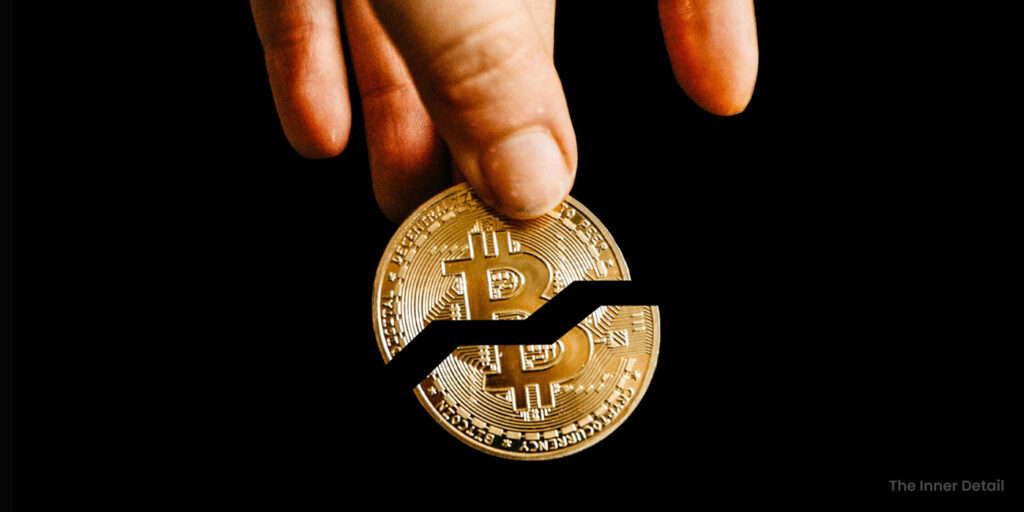Bitcoin halving recently took effect on April 19, 2024, marking it to be the fifth halving ever since bitcoin was introduced in 2009. Bitcoin-halving occurs roughly every four years, and it has a great impact on how the system works, affecting the bitcoin miners, the cryptocurrency market and owners of the currency.
But what does bitcoin halving mean? Bitcoin halving is cutting down the reward given to miners in half, which occurs after 210,000 blocks of transactions are computed and added to the main chain.
It may sound difficult to understand for the first-time readers of bitcoin. I hope the coming lines might clarify you regarding bitcoin-system and what halving means in detail.
How Bitcoin transactions work?
Bitcoins are cryptocurrencies which utilize blockchain technology for operation. The blockchain technology for bitcoins consists of a network of computers (called as nodes) which runs the bitcoin software and has the partial or complete history of transactions of bitcoins.
(In case if you need to know how blockchain technology works)
Every time a transaction happens, it needs to be checked for validity (which involves miners solving cryptographic puzzle) and then added to the blockchain blocks of bitcoin and the information is broadcasted to all other nodes (computers).
After verification of every transaction, miners will be paid in bitcoins and this payment will get halved after 210,000 blocks of transactions. There will be multiple questions pondering after this. We will look into that one by one.
Bitcoin Halving
So, this halving of payment of bitcoins to the bitcoin miners is called bitcoin-halving. The first reward for mining was 50 bitcoins, followed by 25 (2012), 12.5 (2016), 6.25 (2020), and 3.125 bitcoins on April 19, 2024. The next halving is expected to occur in 2028, where the block reward will reduce to 1.625 bitcoins. Halving occurs at every four years roughly and the last halving is expected to be at 2140.
Currently as of April 2024, 19.69 million bitcoins were in circulation, and only 1.31 million have to be released via mining rewards to make it to theoretical maximum supply of 21 million.
Bitcoin mining algorithm takes on average 10 minutes (9.66 mins) for finding a single new block and it would take about 1409 days to mine the 210,000 blocks required, which is near to four years (1461 days). That’s why halving occurs every 4 years.
Bitcoin halving’s Impact
Bitcoin halving influences the cryptocurrency market condition and profoundly on miners. Generally, after every bitcoin halving miners’ reward is reduced to half, hindering their revenue generation. However, bitcoin halving creates demand for the cryptocurrency. As the halving reduces the supply – number of new bitcoins introduced, demand increases. This can be noted by the increase in bitcoin’s price after each previous halving event.
As per estimates from Bitfinex, a crypto exchange firm, the demand of bitcoins post halving is to be 5x greater than supply.
Investing in bitcoins indeed surges accordingly along with the demand. Further, halving also addresses the inflation concerns. Any inflationary effects on bitcoin are countered by reducing the reward amount and maintaining scarcity. However, it has nothing to do with the inflation effects of fiat currency.
Bitcoin miners, in order to tackle the revenue decrease of halving, are considering alternative ways to level up the earnings. According to a report by CNBC, miners are either deploying artificial intelligence models in their investing strategies in bitcoins or they are focusing on reducing their energy costs. Mining consumes lots of electricity and using more energy-efficient mining equipment might really help in cutting costs.
Bitcoin-halving not only increased the price of bitcoins but also the transaction fee to almost a whopping 2645%. The mean transaction fee on the bitcoin network on April 20 was $91.89 up from March’s average mean fee of $3.35, as per Coin Metrics data.
Though the halving leads to surge of price of bitcoins, some analysts believe that the price of Bitcoin could remain flat or even decline, as the halving has already been priced into the market.
(For more such interesting informational, technology and innovation stuffs, keep reading The Inner Detail).
Kindly add ‘The Inner Detail’ to your Google News Feed by following us!






